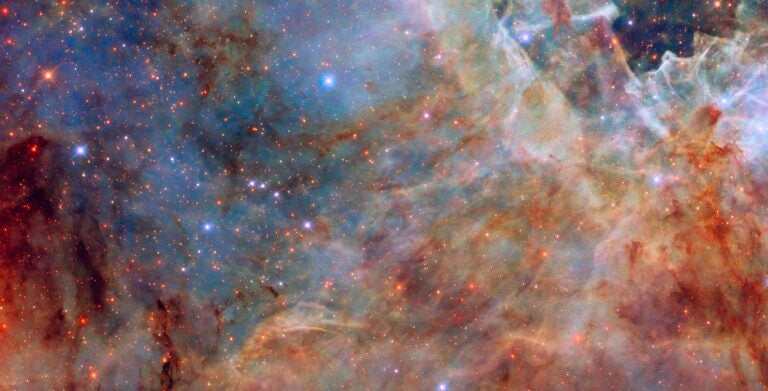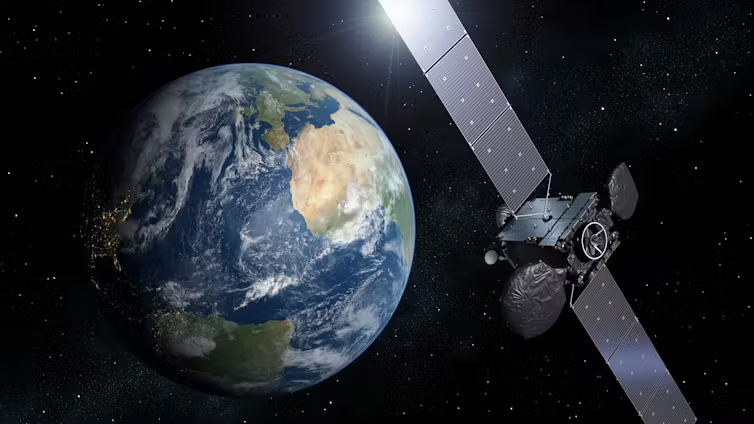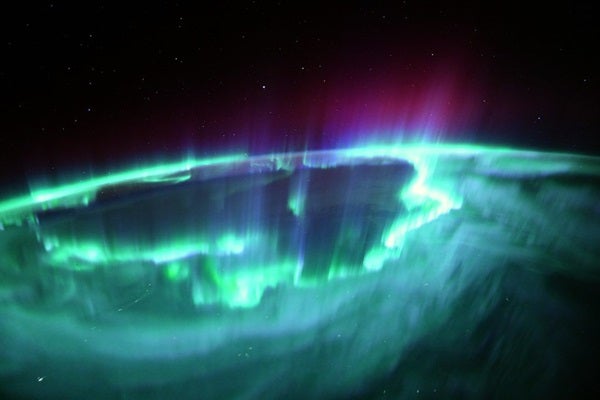
Both inside and outside the solar system, aurorae light up the skies of planets, moons, and a variety of other celestial objects. With their emissions ranging from X-ray to radio wavelengths, aurorae are a signpost for the myriad interactions that can produce them — interactions that would otherwise be difficult to imagine.
What causes aurorae on Earth?
For example, the Sun’s solar wind, which is packed with charged particles, washes over Earth and our protective magnetic shield, the magnetosphere. But this steady breeze of charged particles drags Earth’s magnetic field lines across the poles, giving our magnetosphere a comet-like tail that extends into the shadowy space beyond Earth’s nightside.
“The magnetotail is like a cooker that accelerates electrons from Earth’s space and dumps them into the polar regions,” Eftyhia Zesta, a space physicist at NASA’s Goddard Space Flight Center, tells Astronomy.
The electrons, in turn, collide with atmospheric particles and impart enough energy to bump them up to a higher-energy state. These excited atmospheric particles then emit photons of visible light when they return to their original energy levels.

The well-known green aurorae occur when electrons collide with oxygen particles at altitudes between about 62 miles (100 kilometers) and 186 miles (300 km). The rarer red aurorae are the result of electron-oxygen collisions higher up in Earth’s atmosphere, at altitudes between about 186 miles (300 km) and 248 miles (400 km). Meanwhile the purplish-pink-red fringes of aurorae are the work of electron-nitrogen impacts.
And because the billions of intermittent flashes of light that combine to create an aurora happen along magnetic field lines that are constantly moving, auroral bands have the appearance of “dancing” across the sky.
Earth’s aurorae are not just a night-time phenomenon, either: On Earth’s dayside, protons in the magnetosphere collide with atmospheric hydrogen atoms and emit X-rays. Unfortunately, our eyes haven’t evolved to view X-ray light, so these daytime aurorae are invisible to us.
“Aurorae are not always visible, but they are still a type of light,” Zesta says.
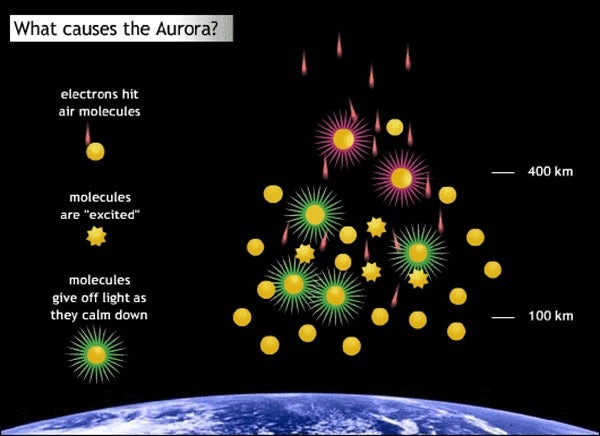
The northern and southern lights of Earth are not the only aurorae in the solar system. A variety of mechanisms cause aurorae elsewhere. In some cases, the mechanisms that create aurorae on other worlds are similar to what happens at Earth. And in other case, they are quite different.
Aurorae on Mercury? No, but…
Despite having a global magnetic field, Mercury’s field is just 1 percent the strength of Earth’s.The solar system’s innermost planet also has an extremely thin atmosphere, so it doesn’t have the right requirements to produce aurorae.
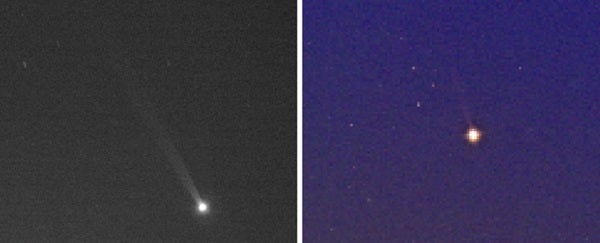
Nonetheless, some of the solar wind does seep into Mercury’s magnetosphere, where it is accelerated downward and collides with the planet’s surface, ejecting rocky material (largely sodium) that glows in the sunlight. Some astrophotographers have even managed to capture images of Mercury’s tenous sodium tail.
“It’s not aurorae, but it’s a similar process,” says Carl Schmidt, a space physicist at Boston University.
Aurorae on Venus? Yes, but…
Venus has no significant global magnetic field, which means the solar wind collides directly with particles in Venus’ atmosphere, like carbon dioxide and oxygen. This does produce aurorae on Venus, but not in quite the same way aurorae are produced on Earth.
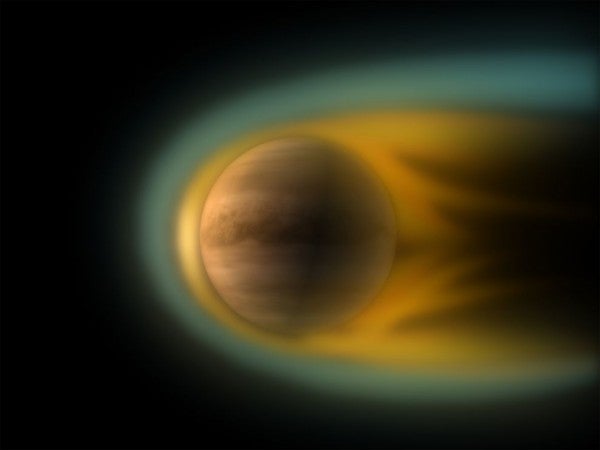
Aurorae on Venus display themselves as faint flashes of ultraviolet and visible light, including the same green emissions seen on Earth’s nightside, which indicates the presence of excited oxygen.
Aurorae on Mars? Yes, but…
The Red Planet also displays aurorae, despite the world not having a global magnetic field. But Mars does have localized magnetospheres in its southern hemisphere.
These zones are produced by ancient rocks that have remained magnetic from long ago, when Mars had a dipole magnetic field. Oxygen emissions like those seen on Earth and Venus suggest that green aurorae could be visible to future astronauts who visit Mars.
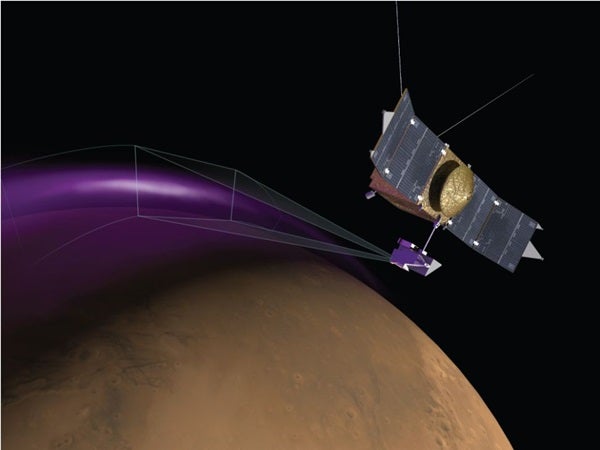
But that’s not all: Mars also has dayside proton aurorae that occur when solar wind protons accelerate hydrogen particles to the lower atmosphere, where they collide with other particles. Beyond the solar wind, energetic protons and electrons from solar flares also produce diffuse aurorae at mid latitudes on Mars.
Aurorae on Jupiter? Yes.
Of all the aurorae in the solar system, none are more powerful than Jupiter’s. The gas giant’s massive size and fast rotation produce a magnetosphere some 20,000 times as powerful as Earth’s. Jupiter’s magnetosphere accelerates electrons deep into the gas giant’s atmosphere. These electrons then collide with particles like hydrogen to produce Jupiter’s vast northern and southern auroral lights, which shimmer in a red tone.
Jupiter’s aurorae are not only huge, they also never stop. “If you could turn off the solar wind, Earth would not have an aurora, but Jupiter would,” says Schmidt.

The Hubble Space Telescopes captured far-ultraviolet observations of strong aurorae on the poles of Jupiter, seen in this composite shot.
NASA/ESA/J. Nichols (University of Leicester)
Much of Jupiter’s aurora-producing particles come from the planet’s volcanic moon Io, which orbits inside the gas giant’s magnetosphere and outgasses sulfur and oxygen, leading to spectacular green and orange aurorae. Jupiter’s aurorae also have been observed in ultraviolet, infrared, and visible light on the nightside.
And that’s not all. Jupiter’s magnetosphere accelerates electrons and protons into the atmospheres of its moons, where they collide with gases like oxygen (Europa and Callisto) and sulfur dioxide and salts (Io). This produces a spectacular range of colors, including red, green, orange, and a mix of hues.
Aurorae on Saturn? Yes.
Saturn’s main auroral ovals appear over the planet’s polar regions. These aurorae are thought to be both solar wind-driven like on Earth, and magnetosphere-driven like on Jupiter. Many of the aurora-producing particles in Saturn’s atmosphere are also sourced from its icy moons and rings.
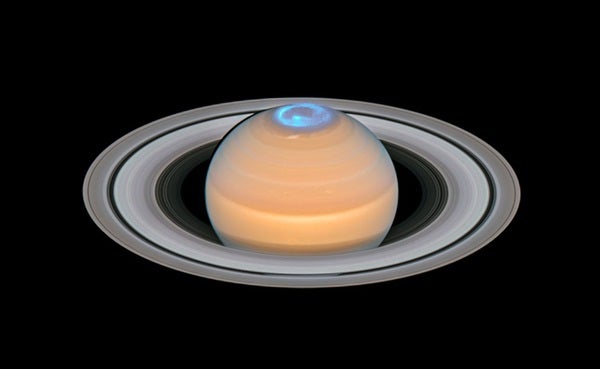
Saturn’s aurorae primarily emit ultraviolet light. This is a result of the planet’s atmosphere being dominated by hydrogen, as is the case for the other gas giant planets.
Aurorae on Uranus? Yes.
Due to the distance to Uranus — and the relative dearth of space missions to the planet — the ice giant’s aurorae are not as well documented as they are for many other worlds. But observations by the Hubble Space Telescope have confirmed that Uranus does have aurorae that produce emissions in ultraviolet light.
Despite the limited data, aurorae on Uranus are expected to be one-of-a-kind because the planet orbits on its side and its magnetic field is tilted 60 degrees relative to its spin axis. “This makes for complicated geometry unlike anywhere else,” says Schmidt.
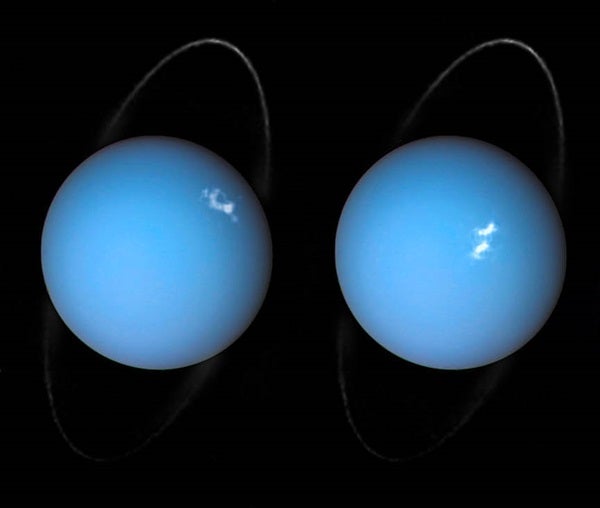
The result is highly variable interactions between the solar wind and Uranus’ magnetosphere, which can scatter auroral emissions across much of the planet.
Aurorae on Neptune: Yes.
This ice giant isn’t as tilted as Uranus, but Neptune’s magnetic field is also offset, by about 50 degrees. This leads to variable auroral emissions similar to those of Uranus. These aurorae are also expected to be sourced from Neptune’s icy moons, like Triton, and rings.
Aurorae outside the solar system? Yes, and…
As you might expect, the solar system isn’t the only place that hosts aurorae. Astronomers have detected radio emissions from objects outside the solar system that seem to be auroral emissions, too. The list includes extrasolar bodies with very strong magnetic fields, such as brown dwarfs and red dwarfs (including the detection of auroral emissions from our second closest star, Proxima Centauri).
And in another case, astronomers think they’ve detected radio emissions from aurorae on a massive rogue planet that roams the Milky Way without a host star. Because this planet doesn’t orbit a star, researchers think it must host a moon that feeds it charged particles like Io does for Jupiter.
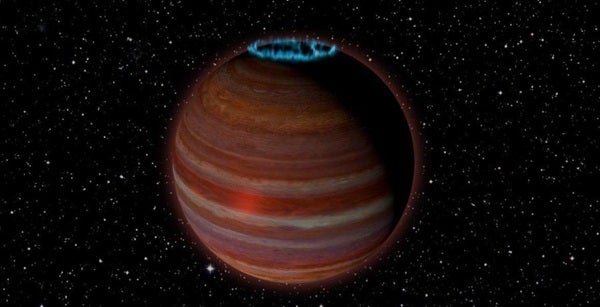
Investigating auroral emissions from objects outside our solar system may help reveal whether exoplanets have magnetospheres similar to Earth’s. And because such magnetospheres would protect those worlds from the solar wind and cosmic rays, they could also play a role in the exoplanets’ potential habitability.
“We have learned so much about the planets and moons in our solar system by studying aurorae,” says Harish Vedantham, an astronomer at the Netherlands Institute for Radio Astronomy, “and it’s exciting to do the same for extrasolar systems.”


